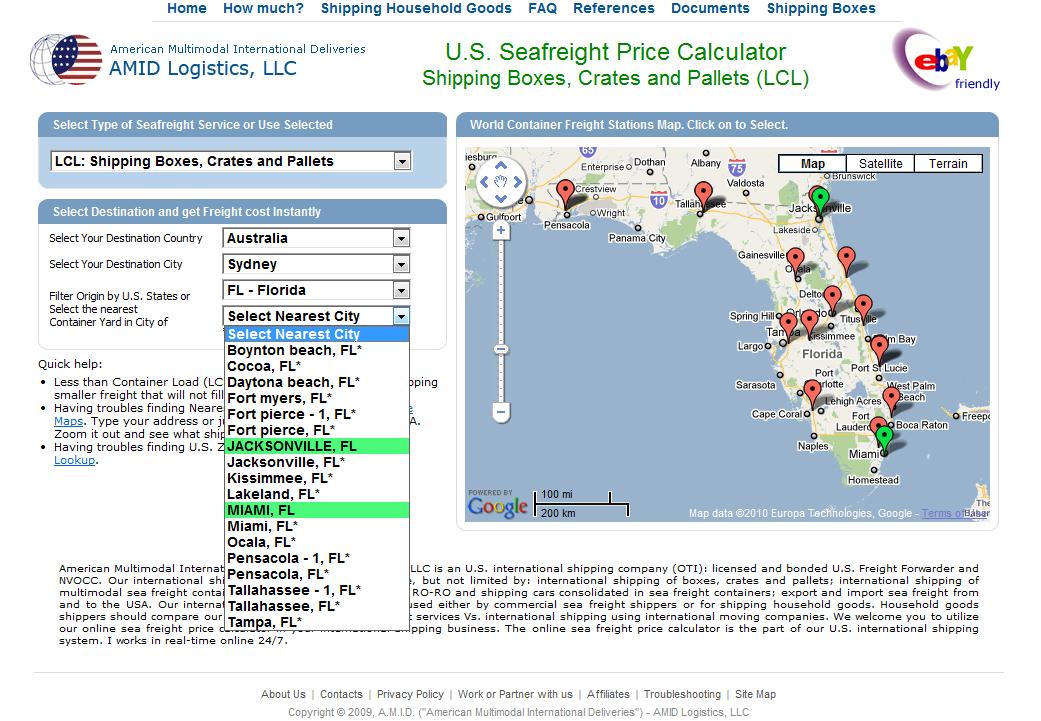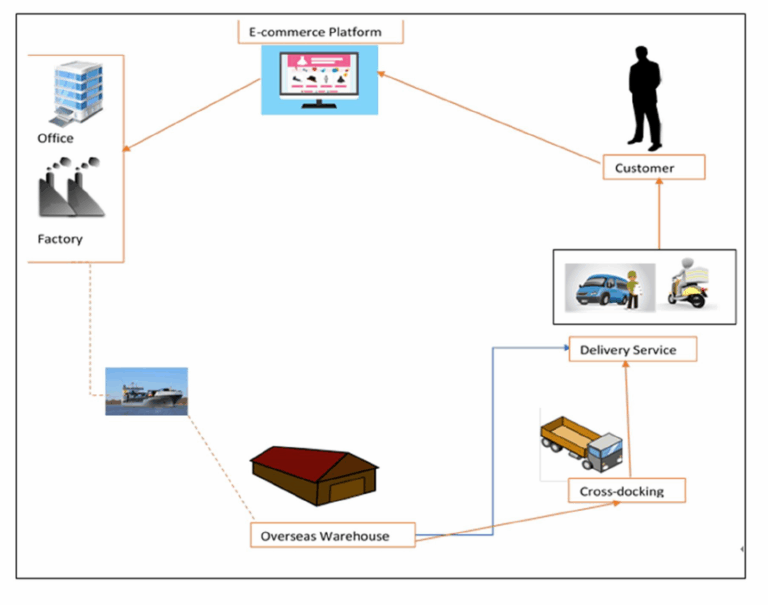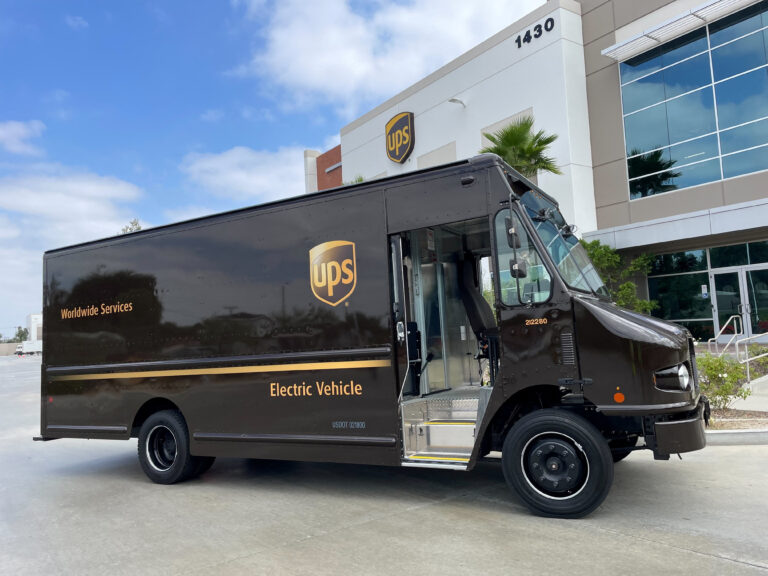The Definitive Guide to Shipping Rates To India From Usa: Rates, Tr…
Your Complete Guide to shipping rates to india from usa
Shipping internationally can be a daunting challenge for businesses, particularly when it comes to understanding the complexities of shipping rates from the USA to India. With a plethora of options available, each with its own set of costs, transit times, and regulatory requirements, navigating this landscape can feel overwhelming. Businesses often grapple with unexpected expenses, lengthy delivery times, and the intricate web of customs regulations that govern international trade. As a result, many shippers find themselves in a maze of uncertainty, unsure of how to optimize their shipping strategy while minimizing costs and ensuring timely deliveries.
In this comprehensive guide, we will demystify the process of shipping from the USA to India, covering key areas that will empower you to make informed decisions. We will delve into various shipping methods available, from express services offered by global carriers like DHL and FedEx to more economical options through USPS. Understanding these methods is crucial for selecting the right service that aligns with your business needs.
Next, we will examine the costs associated with shipping to India, breaking down the factors that influence pricing. Weight, dimensions, destination, and additional services such as insurance or expedited delivery all play a significant role in determining your shipping expenses. By gaining insight into these variables, you can better forecast your logistics budget.
We will also explore transit times, providing a clear comparison of delivery speeds across different carriers and service levels. For businesses that rely on timely shipments, understanding these timelines is essential for planning and customer satisfaction.
Moreover, customs regulations can be a significant hurdle in international shipping. We will provide a detailed overview of the customs process, including how to prepare your documentation, the importance of KYC (Know Your Customer) compliance, and tips for avoiding common pitfalls that can lead to delays and additional charges.
Finally, we will address the inherent risks associated with international shipping, including potential damage, loss, and unforeseen costs. We will share strategies to mitigate these risks, ensuring a smoother shipping experience.
By the end of this guide, you will gain the expert knowledge necessary to navigate the complexities of shipping rates from the USA to India efficiently. Whether you are an importer, exporter, or business owner looking to expand your operations, this resource will equip you with the tools and insights needed to optimize your international shipping strategy.

Table of Contents
- Your Complete Guide to shipping rates to india from usa
- Understanding Your Shipping Options: A Detailed Comparison
- Deconstructing the Cost: A Full Pricing Breakdown
- Transit Time Analysis: How Long Will It Take?
- Navigating Customs Clearance: A Step-by-Step Guide
- A Practical Guide to Choosing Your Freight Forwarder
- Incoterms 2020 Explained for Shippers
- Risk Management: Identifying and Mitigating Common Shipping Problems
- Frequently Asked Questions (FAQs) for shipping rates to india from usa
- Conclusion: Key Takeaways for Successful Shipping
- Important Disclaimer
Understanding Your Shipping Options: A Detailed Comparison
Overview of Shipping Methods to India from the USA
When it comes to shipping goods from the USA to India, businesses have a variety of options to choose from, each with its unique advantages and disadvantages. The choice of shipping method can greatly impact costs, delivery times, and overall efficiency. This guide provides a detailed comparison of the primary shipping methods, helping international shippers, importers, exporters, and business owners make informed decisions tailored to their specific needs.
Comparison Table
| Shipping Method | Best For | Speed | Cost Level | Key Advantages | Key Disadvantages |
|---|---|---|---|---|---|
| Sea FCL (Full Container Load) | Large shipments | 20-40 days | Moderate | Cost-effective for large volumes, less handling | Longer transit time, limited tracking |
| Sea LCL (Less than Container Load) | Small to medium shipments | 30-45 days | Moderate to High | Flexibility for smaller shipments, shared costs | Longer transit time, potential for damage due to handling |
| Air Freight | Urgent shipments | 1-7 days | High | Fast delivery, reliable tracking | Expensive, weight restrictions |
| Rail Freight | Bulk shipments, landlocked regions | 10-20 days | Moderate | Cost-effective for large loads over land | Limited routes, slower than air |
| Express Services (DHL, FedEx) | Time-sensitive packages | 1-3 days | High | Fast, reliable, extensive tracking | Very expensive, limitations on package size |
Detailed Breakdown of Each Method
Sea FCL (Full Container Load)
What It Is: Shipping goods in a full container, typically 20 or 40 feet in size, exclusively for one shipper.
When to Use: Ideal for businesses with large volumes of goods that can fill an entire container.
Pros:
– Cost-Effective: Lower cost per unit compared to other methods.
– Less Handling: Reduces the risk of damage since the container is sealed until it reaches its destination.
Cons:
– Longer Transit Times: Can take several weeks to reach India.
– Requires Planning: Must be planned in advance to ensure container availability.
Sea LCL (Less than Container Load)
What It Is: Shipping goods that do not fill an entire container, sharing space with other shipments.
When to Use: Suitable for small to medium shipments where full container loads are not feasible.
Pros:
– Flexibility: Allows shippers to send smaller quantities without the need for a full container.
– Cost Sharing: Costs are divided among multiple shippers, making it economical.
Cons:
– Longer Transit Time: Additional handling and customs clearance can delay delivery.
– Risk of Damage: Increased handling can lead to a higher risk of damage.
Air Freight
What It Is: Transporting goods via aircraft, typically for urgent shipments.
When to Use: Best for time-sensitive shipments or high-value items that require swift delivery.
Pros:
– Speed: Fastest shipping method, usually taking only a few days.
– Reliable Tracking: Enhanced tracking capabilities provide visibility during transit.
Cons:
– High Costs: Significantly more expensive than sea freight.
– Weight Limitations: Heavier shipments may incur additional charges or be restricted.
Rail Freight
What It Is: Transporting goods via train, primarily for bulk shipments across land.
When to Use: Effective for large shipments, especially in landlocked regions.
Pros:
– Cost-Effective for Bulk: Generally cheaper than air freight for large volumes.
– Environmentally Friendly: Lower carbon footprint compared to road transport.
Cons:
– Limited Routes: Not all regions are accessible by rail.
– Slower Transit: Delivery times are longer than air freight.
Express Services (DHL, FedEx)
What It Is: Premium shipping services that offer expedited delivery options.
When to Use: Ideal for urgent deliveries requiring quick turnaround times.
Pros:
– Fast Delivery: Typically delivers within 1-3 days.
– Comprehensive Tracking: Provides real-time updates and tracking capabilities.
Cons:
– High Costs: Premium pricing can be prohibitive for larger shipments.
– Size Limitations: Restrictions on maximum package dimensions and weight.
Special Considerations
Multimodal Transport
Multimodal transport involves using multiple modes of transport (e.g., sea and air, rail and road) to optimize shipping efficiency. This approach can be beneficial for businesses looking to balance speed and cost. For instance, a shipment might be sent by sea to a nearby port and then transferred to air freight for final delivery, combining the cost-effectiveness of sea freight with the speed of air freight.
Specialized Options
-
RoRo (Roll-on/Roll-off): This method is specifically for vehicles and heavy machinery, where goods are driven directly onto the ship. It is advantageous for transporting large equipment but may not be suitable for all types of cargo.
-
Break Bulk: This refers to shipping cargo that must be loaded individually, rather than in containers. It is often used for oversized cargo that cannot fit into standard containers, but it involves higher handling costs and risks.
Conclusion
Choosing the right shipping method from the USA to India is crucial for managing costs and ensuring timely delivery. By understanding the various options available—ranging from sea freight to express services—businesses can make informed decisions that align with their logistics needs. Whether you require speed, cost-effectiveness, or flexibility, a thorough understanding of these methods will empower you to optimize your shipping strategy effectively.
Deconstructing the Cost: A Full Pricing Breakdown
Understanding Shipping Costs: A Comprehensive Breakdown
When shipping from the USA to India, understanding the full pricing structure is essential for international shippers, importers, exporters, and business owners. The costs associated with shipping can be intricate, encompassing various components that contribute to the overall expense. This section deconstructs the main cost components involved in shipping, analyzes the factors influencing these costs, and offers actionable strategies to reduce expenses.
Main Cost Components
Shipping costs typically consist of three primary categories:
-
Main Freight: This is the core expense associated with transporting goods from the origin to the destination. It can be further divided into air freight and sea freight, each with its own pricing structure based on weight, volume, and delivery speed.
-
Origin Charges: These are fees incurred at the point of departure, including packaging, handling, and loading costs. They can also encompass customs documentation and other administrative fees required to prepare the shipment for international transport.
-
Destination Charges: Once the shipment arrives in India, additional fees may apply. These include customs clearance fees, delivery charges to the final destination, and any applicable duties and taxes.
Detailed Cost Factor Analysis
Main Freight
The main freight cost is influenced by several factors:
- Mode of Transport: Air freight is generally faster but more expensive than sea freight. For urgent shipments, businesses may opt for air freight despite the higher cost.
- Weight and Volume: Shipping costs are often calculated based on the greater of the actual weight or the dimensional weight (volume-based weight). This means that bulky but lightweight items can incur higher charges.
- Distance: The distance between the origin and destination plays a critical role. Longer distances typically result in higher freight costs.
Origin Charges
Origin charges can vary significantly depending on the following:
- Packaging Requirements: Proper packaging to protect goods during transit can increase costs. Fragile items may require specialized packing materials, while bulk shipments might need pallets or containers.
- Handling Fees: Charges for loading and unloading goods at the shipping facility can vary based on the complexity of the operation and the type of goods being shipped.
- Documentation Fees: Completing necessary export documentation can incur fees, especially if using third-party logistics providers.
Destination Charges
Destination charges are influenced by several key factors:
- Customs Duties and Taxes: The Indian government imposes various duties based on the item classification under the Harmonized System (HSN) code. The duties include Basic Customs Duty, Integrated Goods and Services Tax (IGST), and other applicable charges. Understanding the classification of goods is crucial for accurate duty estimation.
- Delivery Charges: Fees for transporting goods from the port of entry to the final destination can vary based on distance and delivery speed. Urban areas might incur lower delivery charges compared to remote locations.
- Additional Handling Fees: If special handling is required upon arrival, such as refrigeration for perishable goods, additional fees may be charged.
Example Pricing Table
Below is a sample pricing table illustrating estimated shipping costs for various freight options. Note that these figures are estimates and can vary based on service providers, market conditions, and specific shipment details.
| Freight Type | 20ft Container | 40ft Container | LCL (per cubic meter) | Air Freight (per kg) |
|---|---|---|---|---|
| Estimated Cost | $1,500 | $2,800 | $250 | $10 |
Disclaimer: The above prices are for illustrative purposes only and may vary based on real-time market conditions, specific service providers, and shipment details.
How to Reduce Costs
Reducing shipping costs is a priority for many businesses. Here are actionable tips to help minimize expenses when shipping from the USA to India:
-
Consolidate Shipments: Combine multiple orders into a single shipment to take advantage of bulk shipping rates, reducing overall costs.
-
Optimize Packaging: Use efficient packaging solutions to minimize weight and volume. This can help avoid dimensional weight charges.
-
Choose the Right Shipping Method: Assess the urgency of your shipment. For non-urgent items, consider sea freight, which is often significantly cheaper than air freight.
-
Negotiate Rates: Build relationships with freight forwarders and negotiate rates based on shipping volume and frequency. Many providers offer discounts for regular customers.
-
Understand Customs Regulations: Familiarize yourself with Indian customs regulations to avoid unexpected duties and taxes. Ensure all documentation is accurate and complete to prevent delays.
-
Use Technology: Utilize freight forwarding software and tools to compare shipping rates across various carriers, ensuring you choose the most cost-effective option.
-
Plan for Peak Seasons: Shipping costs can spike during peak seasons. Plan shipments in advance to avoid higher rates and ensure availability.
By understanding the cost components and employing strategies to reduce shipping expenses, businesses can effectively manage their logistics operations and improve profitability when shipping to India from the USA.
Transit Time Analysis: How Long Will It Take?
Factors Influencing Transit Time
When shipping goods from the USA to India, several factors can significantly influence the transit time. Understanding these variables can help shippers make informed decisions and better manage their logistics.
-
Shipping Mode: The choice between air freight and sea freight is one of the most significant factors affecting transit time. Air freight is typically faster, with delivery times ranging from 1 to 7 days depending on the service level chosen. In contrast, sea freight can take anywhere from 15 to 40 days, depending on the specific route and shipping line used.
-
Port Congestion: Congestion at ports can cause delays in both loading and unloading shipments. Major ports, such as those in Mumbai or Chennai, can experience heavy traffic, especially during peak shipping seasons or due to unforeseen circumstances like labor strikes or natural disasters.
-
Customs Clearance: Customs procedures in both the USA and India can introduce delays. While the USA is known for its efficient customs processing, Indian customs can sometimes be slower due to the need for thorough inspections and documentation verification. Having all necessary paperwork prepared, including invoices and KYC documents, can help expedite this process.
-
Shipping Routes: The specific shipping route taken can also affect transit times. Direct routes are typically faster, while shipments that require multiple stops or transshipments can add significant time to the overall delivery.
-
Weather Conditions: Adverse weather conditions can disrupt shipping schedules, particularly for air freight. Seasonal weather patterns, such as monsoons in India or winter storms in the USA, can lead to delays in transit.
Estimated Transit Time Table
| Origin | Destination | Sea Freight (Days) | Air Freight (Days) |
|---|---|---|---|
| Los Angeles | Mumbai | 25-35 | 3-5 |
| New York | Chennai | 30-40 | 4-6 |
| Chicago | Delhi | 28-38 | 3-5 |
| Seattle | Bangalore | 25-35 | 4-6 |
| San Francisco | Hyderabad | 30-40 | 4-6 |
Context and Explanation
The estimated transit times provided in the table above are based on typical port-to-port durations. These estimates represent the time taken from the point of departure to the arrival at the destination port, without accounting for any additional delays that may occur during customs clearance or final delivery to the consignee.
When planning shipments, businesses should consider these transit times as a baseline. It’s essential to factor in potential delays due to port congestion, customs processing, or adverse weather conditions. For air freight, while the transit times are generally shorter, they can still be impacted by operational issues such as flight cancellations or rerouting.
For sea freight, the longer transit times necessitate careful planning and inventory management, especially for businesses that rely on just-in-time delivery. It’s advisable to maintain open communication with logistics providers to stay informed about any potential disruptions and to have contingency plans in place.
In summary, while the transit times from the USA to India can vary widely based on several influencing factors, understanding these elements can help shippers better anticipate delivery schedules and optimize their logistics strategies.
Navigating Customs Clearance: A Step-by-Step Guide
The Process Explained
Navigating customs clearance when shipping from the USA to India involves several essential steps to ensure your shipment crosses the border smoothly. Below is a typical workflow to guide you through the customs clearance process:
-
Pre-shipment Preparation: Before shipping, confirm that your items are allowed for import into India. Review the latest regulations, including any restrictions or prohibitions, to avoid delays.
-
Documentation Compilation: Collect all necessary documents required for customs clearance. This includes a Commercial Invoice, Packing List, and Bill of Lading, among others. Ensure all documents are accurate and complete.
-
Shipping the Goods: Choose a reliable logistics provider (e.g., DHL, FedEx) that has expertise in international shipping and customs processes. Book your shipment, ensuring to provide all relevant details to your courier.
-
Customs Declaration: Upon arrival in India, your shipment will go through customs. The customs authorities will review your documentation and the goods being imported. Ensure that your declared value matches the invoice to avoid discrepancies.
-
Duties and Taxes Assessment: Customs will calculate any applicable duties and taxes based on the value of your shipment, its HS Code classification, and the nature of the goods.
-
Payment of Duties and Taxes: Duties and taxes must be paid before your shipment can be released. This can usually be done through your logistics provider or directly with customs.
-
Delivery: Once the duties and taxes are settled and customs clearance is complete, your shipment will be released for delivery to the final destination in India.
Essential Documentation
Proper documentation is crucial for a smooth customs clearance process. Below are the key documents you will need:
-
Commercial Invoice: This is a detailed bill provided by the seller to the buyer, outlining the goods being shipped, their value, and terms of sale. It should include a complete description of the items, their HS Codes, and the total value.
-
Packing List: A packing list itemizes the contents of the shipment, including the quantity and type of each item. It assists customs officers in verifying the contents against the commercial invoice.
-
Bill of Lading: This document serves as a contract between the shipper and the carrier. It provides details about the shipment, including the route and terms of carriage.
-
Customs Declaration Form: This form is required by Indian customs to declare the nature, value, and purpose of the shipment. It is typically filled out by your logistics provider.
-
KYC Documents: India requires Know Your Customer (KYC) documents to verify the identity of the recipient. This may include government-issued IDs or business registration documents.
Duties, Taxes, and HS Codes
Understanding duties, taxes, and HS Codes is essential for calculating the total cost of shipping to India.
-
HS Codes: The Harmonized System (HS) Code is an internationally standardized system of names and numbers for classifying traded products. Each product is assigned a specific HS Code, which determines the applicable duty rates. It’s crucial to declare the correct HS Code to avoid penalties or delays.
-
Duties and Taxes Calculation: Duties and taxes are generally calculated based on the customs value of the goods, which includes the cost of the item, insurance, and freight (CIF). The Indian government imposes various duties, including:
- Basic Customs Duty (BCD)
- Customs Handling Fee
- Social Welfare Surcharge
- Integrated Goods and Services Tax (IGST)
The rates for these duties vary depending on the classification of the goods as per the HS Code.
Common Problems & Solutions
While navigating customs clearance, you may encounter several common issues. Here are some of them and how to avoid them:
-
Incomplete Documentation: Missing or incorrect documentation can lead to delays. Solution: Double-check all documents before shipping. Use a checklist to ensure everything required is included.
-
Incorrect Valuation: Declaring a value that doesn’t match the commercial invoice can lead to penalties. Solution: Ensure that the declared value on your customs declaration matches the value on your commercial invoice.
-
HS Code Misclassification: Misclassifying your goods can result in incorrect duty assessments. Solution: Research and verify the correct HS Code for your products. Consider consulting a customs expert if unsure.
-
KYC Documentation Delays: Not providing KYC documents promptly can delay clearance. Solution: Submit KYC documents in advance of shipment arrival. Ensure they are accurate and meet all Indian regulations.
-
Prohibited Items: Attempting to ship prohibited goods can lead to confiscation. Solution: Familiarize yourself with the list of items prohibited from import into India. Always check the latest regulations before shipping.
By following these steps and recommendations, you can streamline your customs clearance process when shipping to India from the USA, ensuring your goods arrive at their destination efficiently and without unnecessary delays.
A Practical Guide to Choosing Your Freight Forwarder
Understanding Your Freight Forwarding Needs
When shipping goods from the USA to India, selecting the right freight forwarder is critical to ensure a smooth and cost-effective shipping experience. A freight forwarder acts as an intermediary between you and various transportation services, helping to navigate the complexities of international shipping. Here’s a practical guide to help you choose the right freight forwarder for your shipping needs.
Key Qualities to Look For
-
Experience and Expertise
Look for a freight forwarder with significant experience in shipping to India. Their knowledge of local regulations, customs procedures, and logistics can save you time and reduce the risk of costly delays. -
Strong Network
A well-established network of agents and carriers is essential. This includes relationships with shipping lines, airlines, and trucking companies. A broad network can provide you with better rates and more flexible shipping options. -
Licensing and Compliance
Ensure that your chosen freight forwarder is properly licensed and compliant with international shipping regulations. They should have the necessary certifications and should be knowledgeable about customs regulations specific to India. -
Communication Skills
Effective communication is vital in logistics. Your freight forwarder should be responsive and proactive in providing updates on your shipment status, potential delays, and documentation requirements. -
Technology Integration
A forwarder that utilizes technology can offer greater visibility and tracking of your shipments. Look for firms that provide online tracking tools, shipment management platforms, and integration with your existing systems.
Sourcing Checklist for Selecting a Freight Forwarder
-
Define Your Needs
Clearly outline what you require from a freight forwarder, including shipment frequency, cargo type, delivery timelines, and any special handling needs. -
Research Potential Forwarders
Use online resources and industry recommendations to compile a list of potential freight forwarders. Look for companies that specialize in shipping from the USA to India. -
Request Quotes
Reach out to your shortlisted forwarders to request detailed quotes. Ensure that the quotes include all potential costs, such as freight charges, customs duties, and any additional fees. -
Ask Questions
Don’t hesitate to ask potential freight forwarders about their experience, service offerings, and how they handle customs clearance. Inquire about their dispute resolution process and how they manage unexpected issues. -
Check References
Ask for references from past clients, particularly those who have shipped to India. A reputable freight forwarder should be willing to provide testimonials or case studies that demonstrate their success in handling similar shipments.
Red Flags to Watch Out For
When evaluating potential freight forwarders, keep an eye out for the following warning signs:
-
Lack of Transparency: If a forwarder is unwilling to provide clear information about their pricing structure or services, this could indicate potential hidden fees or issues down the line.
-
Poor Communication: If a forwarder does not respond promptly to your inquiries or fails to provide updates, this could signal future communication challenges.
-
No Industry Certifications: Ensure that the forwarder holds necessary certifications and memberships in recognized logistics organizations. A lack of these credentials may indicate a lack of professionalism.
-
Negative Reviews or Feedback: Research online reviews and testimonials. Consistently negative feedback regarding shipment delays, customer service, or lost shipments should raise concerns.
-
Inflexibility: A good freight forwarder should be adaptable to your specific needs. If they are rigid in their offerings or unwilling to accommodate your requests, they may not be the best partner for your shipping needs.
Conclusion
Choosing the right freight forwarder for shipping from the USA to India is an essential step in ensuring your goods arrive safely and on time. By considering the key qualities of a reputable forwarder, following a structured sourcing checklist, and being aware of potential red flags, you can make an informed decision that aligns with your business needs. Investing time in this process will not only help you save costs but also enhance the efficiency of your supply chain.
Incoterms 2020 Explained for Shippers
Understanding Incoterms: A Guide for Shippers
Incoterms, or International Commercial Terms, are standardized trade terms that define the responsibilities of buyers and sellers in international transactions. Established by the International Chamber of Commerce (ICC), these terms clarify who is responsible for various aspects of shipping, including transportation costs, risks, and customs clearance. Understanding Incoterms is essential for businesses shipping goods internationally, as they can significantly impact shipping rates and logistics planning.
Key Incoterms Table
| Incoterm | Who Pays for Transport? | Where Risk Transfers? | Best for |
|---|---|---|---|
| EXW | Buyer | Seller’s premises | Sellers looking for minimal responsibility |
| FOB | Seller | Loading port | Buyers wanting control over transport |
| CIF | Seller | Destination port | Buyers wanting a complete shipping solution |
| DDP | Seller | Destination address | Buyers wanting all-inclusive delivery |
Detailed Explanation of Common Incoterms
EXW (Ex Works)
Under the EXW term, the seller makes the goods available at their premises or another named place (factory, warehouse, etc.). The buyer is responsible for all transportation costs and risks involved in moving the goods from the seller’s location to their final destination. For example, if a manufacturer in the USA sells machinery to an importer in India on EXW terms, the importer must arrange for all transportation, including customs clearance in the USA and shipping to India. This term is ideal for sellers who wish to minimize their responsibilities and for buyers who have established logistics capabilities.
FOB (Free On Board)
With FOB, the seller is responsible for all costs and risks until the goods are loaded onto the shipping vessel at the port of departure. Once the goods are on board, the risk transfers to the buyer, who then assumes responsibility for transportation costs to the final destination. For instance, if a company in the USA ships electronics to India under FOB terms, they cover all costs and risks up to the point the goods are loaded onto the ship. This arrangement is advantageous for buyers who want to manage shipping logistics and control the transport process.
CIF (Cost, Insurance, and Freight)
CIF terms place the responsibility of transport and insurance on the seller until the goods reach the destination port. The seller pays for the cost of freight and insurance, ensuring that the buyer is protected against potential loss or damage during transit. An example would be a furniture exporter in the USA who ships goods to a buyer in India on CIF terms. The seller would cover shipping and insurance, providing peace of mind for the buyer, who only takes on risk once the goods arrive at the Indian port.
DDP (Delivered Duty Paid)
Under DDP, the seller assumes maximum responsibility, covering all costs associated with transporting the goods to the buyer’s location, including duties and taxes. The risk remains with the seller until the goods are delivered to the buyer’s premises. For example, if a software company in the USA sells computer hardware to an Indian firm on DDP terms, the seller handles everything from shipping to customs clearance and pays any applicable import duties. This term is ideal for buyers who want a hassle-free purchasing experience, as it simplifies logistics and reduces uncertainty about additional costs.
Conclusion
Choosing the right Incoterm is crucial for effective international shipping. Each term offers different levels of responsibility and risk distribution, influencing shipping rates and logistics planning. By understanding these terms, businesses can make informed decisions that align with their operational capabilities and financial considerations, ultimately enhancing their shipping efficiency to India from the USA.
Risk Management: Identifying and Mitigating Common Shipping Problems
Introduction
In the dynamic world of international shipping, particularly when navigating complex routes like those from the USA to India, proactive risk management is essential for businesses. The shipping process is fraught with potential challenges that can lead to significant delays, increased costs, and even reputational damage. By identifying these risks early and implementing effective mitigation strategies, businesses can ensure smoother operations, reduce unforeseen expenses, and enhance customer satisfaction. This guide provides insights into common shipping problems and practical strategies to manage them effectively.
Risk Analysis Table
| Potential Risk | Impact | Mitigation Strategy |
|---|---|---|
| Cargo Damage | Financial loss, delayed shipments, potential liability claims | Invest in high-quality packaging materials, conduct thorough inspections before shipping, and consider cargo insurance. |
| Delays | Missed deadlines, dissatisfied customers, additional costs | Choose reliable carriers with proven delivery records, implement tracking systems, and plan for potential delays in advance. |
| Customs Holds | Extended shipping times, increased costs, potential fines | Ensure all documentation is accurate and complete, stay informed about customs regulations, and use customs brokerage services. |
| Incorrect Address | Returned shipments, additional shipping costs, customer dissatisfaction | Verify addresses with customers before shipping, utilize address validation tools, and ensure clear communication about address formats. |
| Regulatory Compliance | Fines, shipment confiscation, reputational damage | Familiarize yourself with shipping regulations in both the USA and India, and ensure compliance with KYC and other legal requirements. |
| Currency Fluctuations | Increased shipping costs, budget overruns | Lock in exchange rates when possible, and include currency fluctuation provisions in contracts with partners. |
Cargo Insurance Explained
What It Covers
Cargo insurance is a crucial component of risk management in international shipping. It provides financial protection against loss or damage to goods during transit. Coverage typically includes:
- Physical Damage: Protects against damage due to accidents, natural disasters, or mishandling.
- Theft or Loss: Covers the loss of cargo due to theft or misplacement.
- General Average: If a portion of the cargo is sacrificed to save the rest, this insurance can cover the loss incurred.
Types of Cargo Insurance
- All-Risk Insurance: Offers comprehensive coverage for all types of damage and loss, excluding specific exclusions stated in the policy.
- Named Perils Insurance: Covers only those risks explicitly mentioned in the policy, such as fire, theft, or collision.
- Warehouse-to-Warehouse Coverage: Protects goods from the moment they leave the shipper’s premises until they arrive at the recipient’s location.
Why It’s Essential
Investing in cargo insurance is essential for several reasons:
- Financial Security: It mitigates potential financial losses from unforeseen circumstances, allowing businesses to recover more quickly.
- Peace of Mind: Knowing that your goods are protected can reduce stress and allow businesses to focus on other operational aspects.
- Customer Confidence: Offering insured shipping options can enhance customer trust and satisfaction, making businesses more competitive in the market.
Conclusion
Navigating the complexities of shipping from the USA to India requires meticulous planning and proactive risk management. By identifying common shipping problems and implementing effective mitigation strategies, businesses can minimize disruptions, safeguard their assets, and maintain strong relationships with customers. Additionally, investing in cargo insurance can provide an essential safety net, ensuring that even in the face of adversity, your business remains resilient and capable of delivering outstanding service.
Frequently Asked Questions (FAQs) for shipping rates to india from usa
Frequently Asked Questions About Shipping Rates to India from the USA
-
How much does it cost to ship from the USA to India?
The cost of shipping from the USA to India varies significantly based on several factors including the weight and dimensions of the package, the shipping service selected (express or standard), and the destination within India. Major carriers like FedEx, DHL, and USPS offer tools to estimate shipping costs based on these variables, allowing you to choose the most economical option for your needs. -
What factors influence shipping rates to India?
Shipping rates to India are influenced by factors such as package weight and size, the chosen delivery speed, additional services (like insurance or tracking), and customs duties. Additionally, fluctuations in fuel prices and currency exchange rates can also affect overall shipping costs. -
What is chargeable weight and how is it calculated?
Chargeable weight is the weight used to calculate shipping costs, which can either be the actual weight or the volumetric weight, whichever is greater. The volumetric weight is calculated by measuring the dimensions of the package and using a specific formula (length x width x height divided by a dimensional factor, typically 5000 for international shipments). This ensures that larger, lighter packages are charged appropriately. -
What is the difference between a Bill of Lading (BOL) and an Air Waybill (AWB)?
A Bill of Lading (BOL) is a document used for shipping goods by sea, while an Air Waybill (AWB) is used for air transport. The BOL serves as a receipt and a contract between the shipper and carrier for the transportation of goods, whereas the AWB is a non-negotiable document that acts as a receipt for goods and outlines the terms of the air transport. -
Are there duties and taxes when shipping to India?
Yes, shipments to India are subject to customs duties and taxes, which vary based on the type of goods, their declared value, and the purpose of the shipment (commercial or personal). The Indian government has a de minimis value of INR 0, meaning all items, regardless of value, are subject to these charges. It’s advisable to consult with a customs broker or use tools provided by carriers like DHL to estimate these costs ahead of shipping. -
What documentation is required for shipping to India?
Shipping to India typically requires several documents, including a commercial invoice detailing the contents and value of the shipment, a packing list, and KYC (Know Your Customer) documentation for customs clearance. For businesses, a GSTIN (Goods and Services Tax Identification Number) may also be required. Ensuring that all documentation is complete and accurate can help prevent delays in customs. -
How can I track my shipment from the USA to India?
Most major carriers offer online tracking services where you can monitor the status of your shipment. You will need your tracking number, which is provided at the time of booking. Carriers like FedEx, DHL, and USPS have dedicated tracking tools on their websites for real-time updates on your package’s location and estimated delivery time. -
What are the common restrictions on items shipped to India?
India has strict regulations regarding certain items that cannot be imported, including but not limited to wild animal products, certain pharmaceuticals, and telecommunication devices. It is crucial to consult the Indian government’s list of prohibited items to ensure compliance and avoid potential penalties or shipment returns. -
How long does shipping from the USA to India take?
Shipping times can vary based on the service level chosen. Express services can deliver within 1-3 business days, while standard shipping options may take 5-10 business days or longer. Factors such as customs clearance and local delivery conditions in India can also impact delivery times. -
What is a customs bond and when is it needed?
A customs bond is a contract between the shipper, the customs broker, and the government ensuring that duties, taxes, and penalties related to the shipment will be paid. It is typically required for commercial shipments exceeding a certain value or for businesses that frequently import goods. Having a customs bond in place can facilitate smoother customs clearance and reduce delays.
Conclusion: Key Takeaways for Successful Shipping
Essential Strategies for Effective Shipping to India
Successfully shipping goods from the USA to India requires a strategic approach that encompasses thorough planning, selecting the right logistics partners, and understanding shipping costs.
Planning Your Shipment
Before initiating any shipping process, it’s crucial to conduct comprehensive research on both the logistics landscape and Indian import regulations. This includes understanding customs requirements, documentation needed, and any restrictions on specific goods. A well-defined shipping plan will not only streamline operations but also minimize potential delays and complications.
Choosing the Right Logistics Partners
Selecting a reliable logistics provider is vital for ensuring that your shipments reach their destination on time and in good condition. Major carriers such as DHL and FedEx offer robust networks and expertise in international shipping, providing valuable resources and tools for tracking shipments and managing customs clearance. Leverage their knowledge and technology to enhance your shipping experience and ensure compliance with Indian regulations.
Understanding Shipping Costs
Shipping costs can vary significantly based on factors such as weight, dimensions, destination, and service level. Utilize online quoting tools offered by carriers to get an estimate that fits your budget. Additionally, be aware of duties and taxes that may apply upon importation to India, as these can impact the overall cost of shipping. It’s advisable to budget for these expenses upfront to avoid surprises later in the shipping process.
Take the Next Step
In conclusion, successful shipping to India from the USA hinges on meticulous planning, collaboration with trusted logistics partners, and a clear understanding of associated costs. By adopting these strategies, you can streamline your shipping operations and enhance your business’s global reach. Don’t hesitate to reach out to logistics experts or utilize online resources to further refine your shipping strategy. Start your shipping journey today and unlock new opportunities in the Indian market!
Important Disclaimer
⚠️ Important Disclaimer
The information in this guide is for educational purposes only and does not constitute professional logistics advice. Rates, times, and regulations change frequently. Always consult with a qualified freight forwarder for your specific needs.






